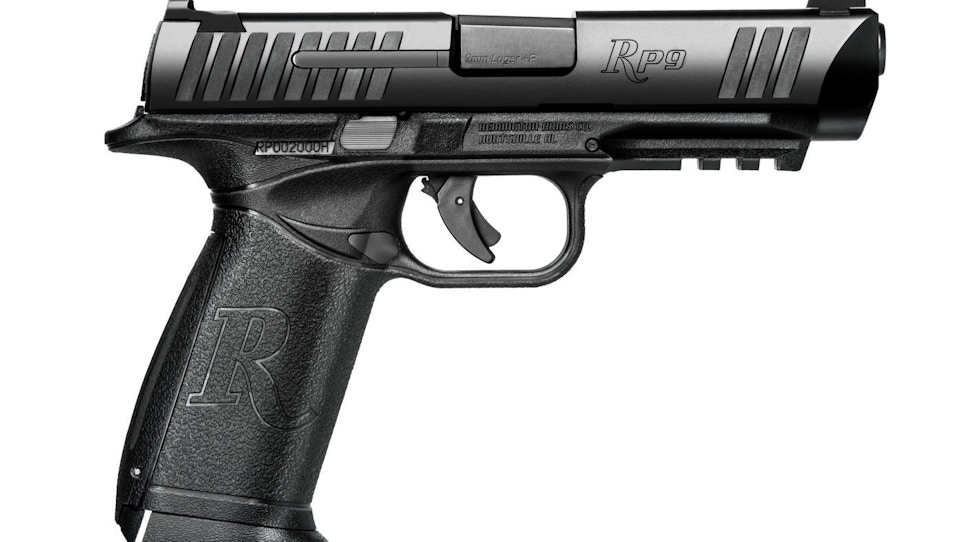We surveyed handgun trends this past January. Types, uses, calibers and available features — we looked them all over and came to some conclusions as to what your customers may be considering this year for concealed carry, home defense, competition and “just for the fun of it” shooting.
Poly And Striker-Fired
The “big” handgun news for the year likely isn’t news to anyone who has been paying attention. America’s love affair with polymer-framed, striker-fired, semi-automatic pistols continues to grow. Though specifically for 9mm models, thank you very much, a few .45 ACP’s made a showing, too.
The poly-framed, striker-fired pistols appeal to many shooters, and for many good reasons. The poly-framed pistols tend to be considerably lighter than their all-metal counterparts and, therefore, easier to carry and conceal. Polymer is tough and withstands its fair share of abuse. And, as shooters keep demanding ever-lighter triggers, these pistols come out on top because most people find that the striker trigger — which releases a spring that drives the firing pin forward — has an easier pull than the standard hammer-fired varieties.
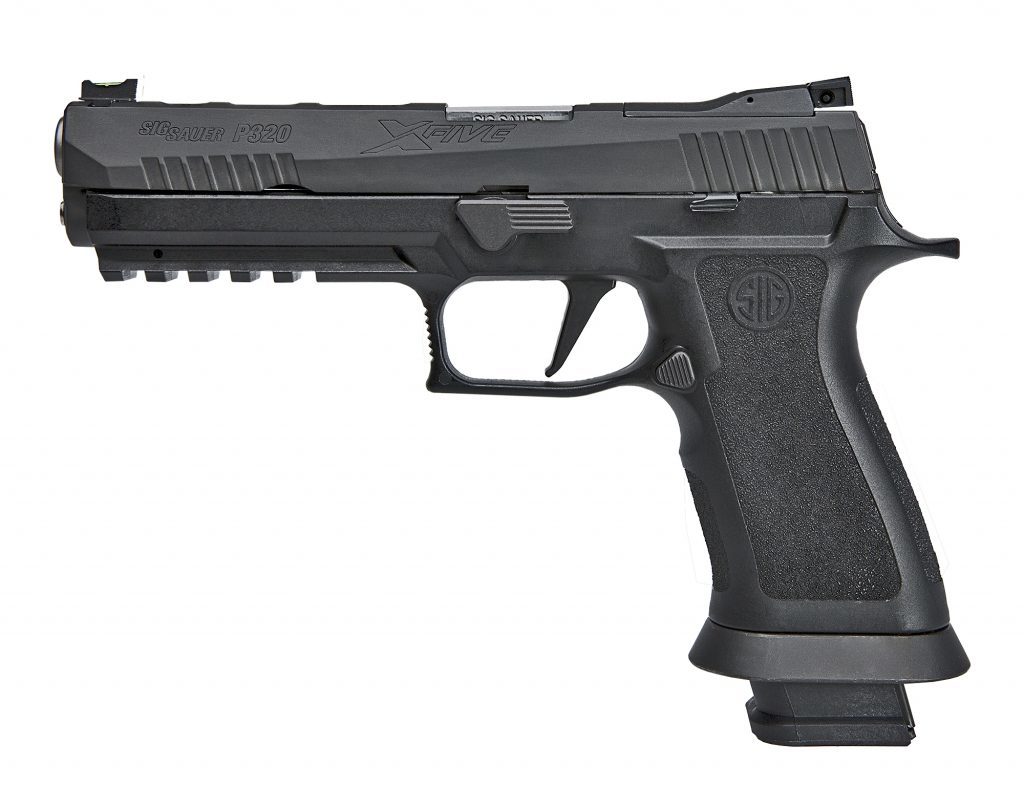
Fresh off being awarded a huge military contract for its P320 semi-automatic, Sig Sauer offers civilians several upgraded versions of the P320 including the competition-ready P320 X5.
Some of the more notable entries into this segment of the pistol market include Sig Sauer’s P320X line. All by itself, the P320 was a pretty successful pistol line. But earlier this year, word came out that the U.S. Army awarded Sig a new contract for the P320 — re-branded as the M-17 Handgun by the Army — for nearly 300,000 pistols with a contract valued at a reported $580 million.
Given the connection between the military/law enforcement markets and the civilian tactical markets, one would expect consumer interest to be high for the P320. Sig helped itself this year by introducing several models to the P320 line including the P320 RX pistol. The striker-fired 9mm ships with a slide-mounted SIG ROMEO1 reflex sight and co-witnessed SIGLITE suppressor sights and is available in compact and full-size versions.
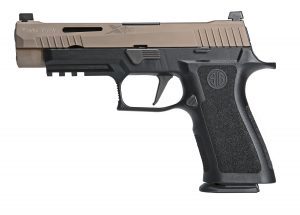
The Sig Sauer X-Series VTAC
Also new to the P320 line is the X-Series. The X-Series is enhanced with an X grip module featuring an extended beavertail, four-sided beveled magazine well and a crisp trigger guard undercut. Additional upgrades include an enhanced flat trigger, improved slide serrations and three lightening cuts atop the slide. The first X-Series model to launch is the new P320 Xfive: a competition-ready pistol.
Remington debuted its very first poly striker, the RP9. Chambered in 9mm, the full-sized RP9 holds an impressive 18+1 rounds of ammunition and should attract a fair amount of consumer interest. Remington is dedicating a substantial budget to promoting and marketing the pistol, plus Remington announced a RP45 was in the works and due out some time in late 2017. Magazines for the RP45 will hold 10+1 and 15+1 rounds of .45 ACP.
Avidity Arms, EAA, Springfield Armory, Smith & Wesson and many other manufacturers also unveiled new poly striker-fired pistols earlier this year. Expect this trend to continue well beyond 2017.
An H9 Shooting Star
The handgun star, though, was the H9 by Hudson Manufacturing. It received very strong reviews from SHOT attendees, generated a huge amount of press and should be on the minds of many handgun shoppers in 2017.
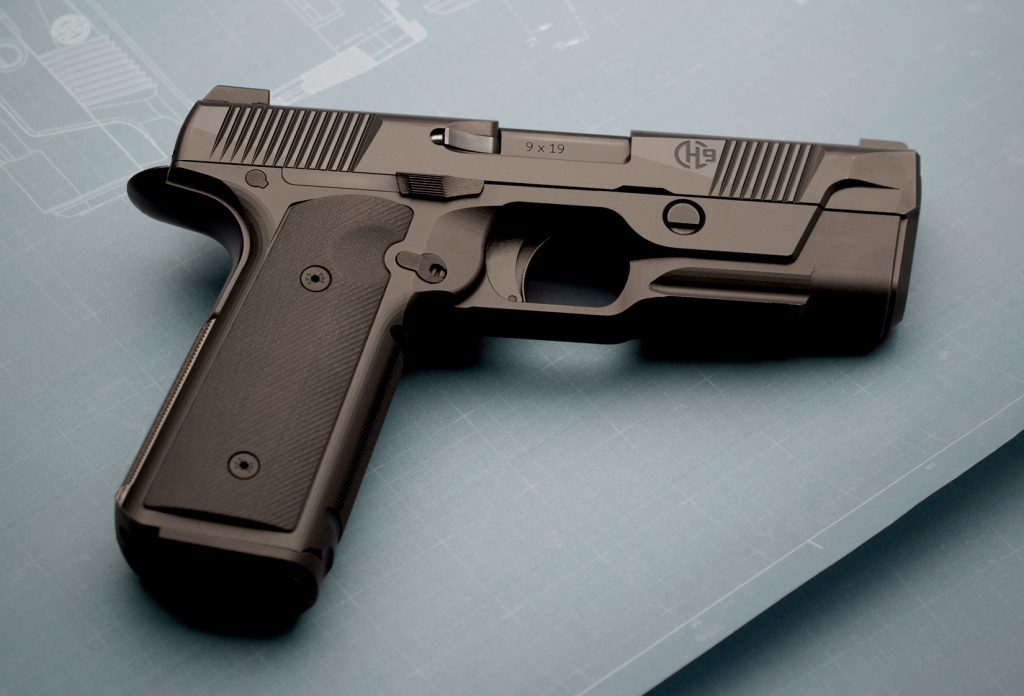
The Hudson H9 is a new innovative 1911-inspired pistol with smooth trigger, low bore axis and an integral safety that will not alter your shots due to uneven pull. Due to the frame, location of the recoil spring and locking lug, the recoil is directed more to the center of your hand, making this a very flat-shooting handgun.
The H9 combines elements from many pistol styles. It is striker-fired, but no poly here — slide, barrel and chassis are all made from stainless steel. Though striker-fired, Hudson designed the H9 with a 1911-type trigger that has a crisper pull than most strikers. It also has a 1911 “look” to it, as the grip frame, beavertail and magazine release all appear to be 1911 clones. At 34 ounces, unloaded, it is closer in weight to a 1911, too.
Like many of the polymer-framed pistols of today, the H9 packs a good deal of 9mm firepower; in this case, a 15+1 capacity.
Wheelgun Resurgence?
While nowhere close to the new number of semi-autos, offerings in the revolver category were surprisingly strong this year. The focus was on smaller self-defense wheelguns including Colt’s reintroducing the Cobra after a two decade hiatus. The previous version had a lightweight aluminum frame while this new one has a stainless steel frame. Chambered for .38 Special +P loads, the new Cobra holds six rounds in the cylinder, has a two-inch barrel and an exposed hammer spur. Media who used it at Range Day raved about the light trigger.
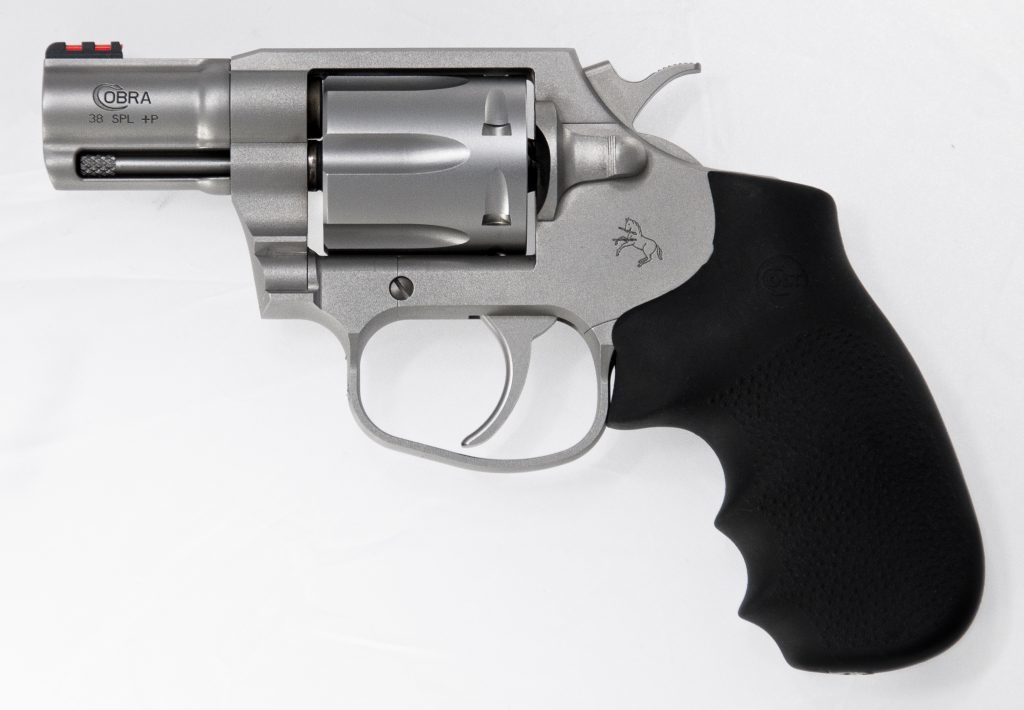
The Colt Cobra should be a top choice among concealed carry holders who prefer a revolver.
Ruger introduced a GP100 with a five-round cylinder chambered in a caliber that’s not received much attention of late, the venerable .44 Special. The big-bore GP100 has a three-inch, full-shrouded barrel and offers a very nice balance of size and weight. This double-action comes standard with a pebble-texture Hogue synthetic Monogrip (no finger grooves!) for a superior grip and good felt recoil reduction. These Hogues are also easily replaced with after-market or Ruger Custom grips.
Smith & Wesson Performance Center offered up several revolvers, too, including the Performance Center Model 642, a snub-nosed double-action in .38 Special with a shrouded hammer and a very nice trigger job. Another offering was the Performance Center 986, a seven-round double-action revolver in 9mm with a 2.5-inch barrel and an exposed hammer spur. Both of these snubbies are aimed directly at the concealed carry market.
The .357 Magnum revolver won’t die off, either, though the big-framed magnums of the past are apparently giving way to smaller versions made for concealed carry.
Kimber led the pack debuting not one but five versions of its K6 revolver in .357 Mag. All these double actions are hammerless, hold six rounds of magnum power, and come in right at 23 ounces unloaded, making them the lightest production model .357’s on the market today.
There’s a new version of Ruger’s .357 Redhawk, too, this one with a 2.75-inch barrel. At a beefy 44 ounces, this eight-shot revolver doesn’t strike us as a concealed carry option, though this double-action will no doubt end up on many a night stand and in quite a few bug-out bags.
The Mighty 10MM
Model 1911 platform pistols chambered in 10mm Auto continue to make inroads into the tactical handgun market for 2017, continuing a trend that started a few years ago. Two models got the lion’s share of attention — the Remington R1 Hunter and Colt Delta Elite Rail Gun — but a decent number of other 10mm pistols made good showings, too.
Sporting a six-inch match-grade barrel the R1 Hunter holds 8+1 rounds of 10mm Auto and weighs in at a hefty 41 ounces unloaded. It has a sturdy rail under the barrel and fully adjustable sights. As the name implies, Remington is promoting this 10mm for the growing handgun hunting market.
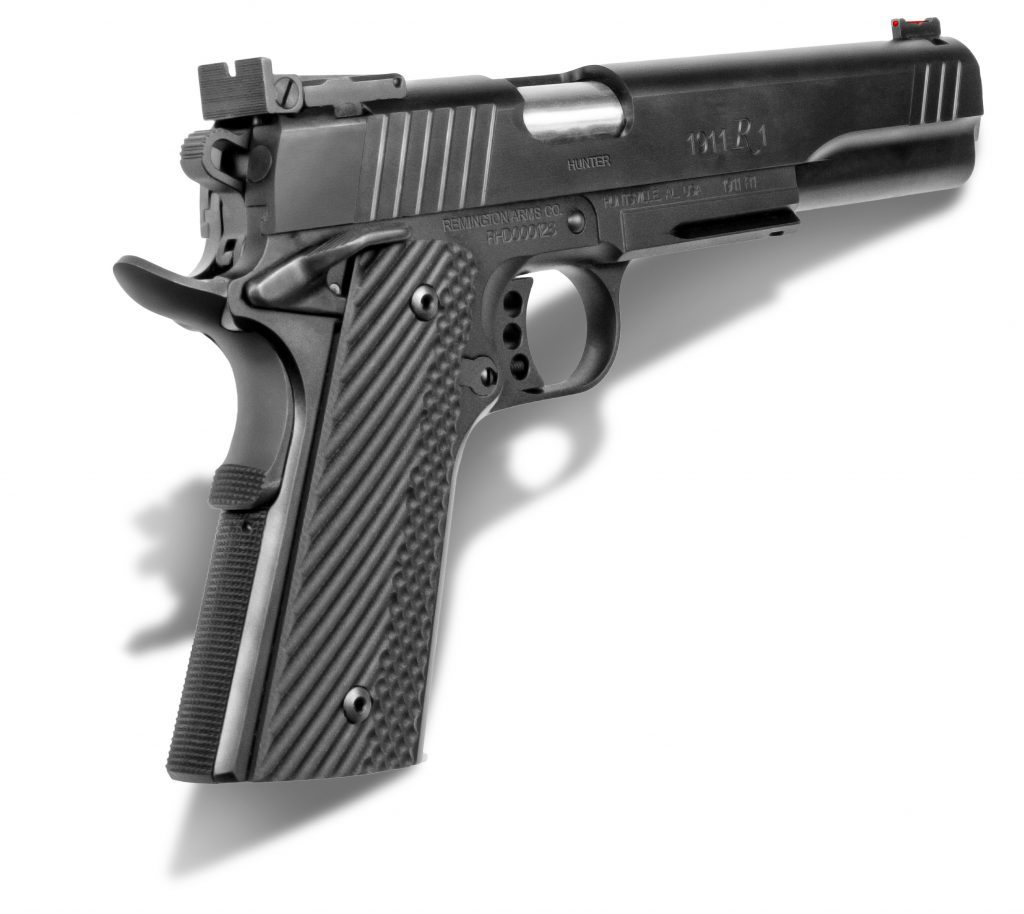
Another entrant into the 10mm market, Remington’s R1 Hunter, should be a draw for home defense buyers as well as hunters.
Colt’s Delta Elite Rail Gun is an upgraded version of its Delta Elite 10mm. This version also has a five-inch barrel, just like the original, but Colt added an accessory rail under the barrel so that tactical lights and lasers can be added. Other enhancements include an upswept beavertail grip safety, extended thumb safety, all stainless steel construction, composite stocks with Delta medallions and Novak white dot sights.
Other new 10mms from earlier in 2017 included: the Les Baer Cobra Hunter 1911 with a six-inch barrel, Kimber Camp Guard 10 1911 and Rock Island Armory with two 10mm models in its TAC ULTRA line, each with a five-inch barrel and both priced several hundred dollars below the $1,200 starting point that is the norm for most 10mm 1911s.
The 10mm may never be more than a niche market — after all, the pistols are pricey, and the 10mm Auto round tends to have pretty stout recoil, especially compared to the 9mm favored by so many — but they have the power that many shooters find missing in the 9mm and have solid applications for home defense.
Going, Going ... ?
Many of the new pistols introduced in January were offered in .40 S&W, but how many customers will actually opt for a .40 S&W versus the 9mm?
Given what industry insiders are saying, the expectation is that the .40 S&W is on its way to a considerable downsizing in overall demand. Part of the reason is the Federal Bureau of Investigation (FBI) announcing last year that it was going back to 9mm duty sidearms and in the process dropping the .40 S&Ws it had been using for years. A number of other law enforcement agencies followed suit.
Just as important to the anticipated .40 S&W decline is the fact that 9mm ammunition is greatly improved in the past few years and is essentially on par with .40 S&W ballistically speaking — usually with less recoil. The available 9mms usually hold more rounds than their .40 S&W counterpart, too, and 9mm ammunition is less expensive.
The .40S&W is still very popular on the handgun competition circuits, though this is a relatively smallish market.
A Pocket Pistol Pause
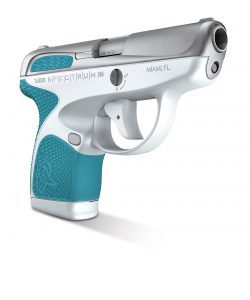
Not many new .380 Auto caliber semi-automatics were debuted this year, but one big exception was the double-action Spectrum from Taurus that is available in a number of color options.
Interestingly, not many new pistols were debuted in .380 Auto, which had been all the rage for the past few years, especially for the compact and “pocket’ pistol buyers. At the retail level, all the indications are these small .380’s are still selling well, and certainly they’re being produced in large quantities, but manufacturers either thought they had enough .380 offerings and simply turned their attention elsewhere (read: “9mm”).
A couple exceptions to that trend were Taurus and Ruger.
Taurus had a very positive SHOT Show response to its new Spectrum. This little .380 Auto has a 2.8-inch barrel and is available in a variety of color schemes. It weighs in at a surprising 10 ounces unloaded and Taurus created a unique grip design with special contours that enable the hand to naturally conform to the firearm, providing a more secure grip.
Meanwhile, Ruger’s LCPII received its share of accolades, too. Granted, the LCPII was not “SHOT Show new” as it was introduced late fall 2016, but it has received a lot of attention. Ruger took the first version of the LCP and with the LCPII spiffed up the sights, gave it a much better trigger and made the slide easier to work. It is a nice little back-up pistol and one that you can literally drop in your pocket or purse and should be on the minds of many concealed carry consumers in 2017.
Featured image: The RP9 is “Big Green’s” first foray into the 9mm poly-framed, striker-fired semi-automatic market. A .45 ACP version is slated for later this year.
